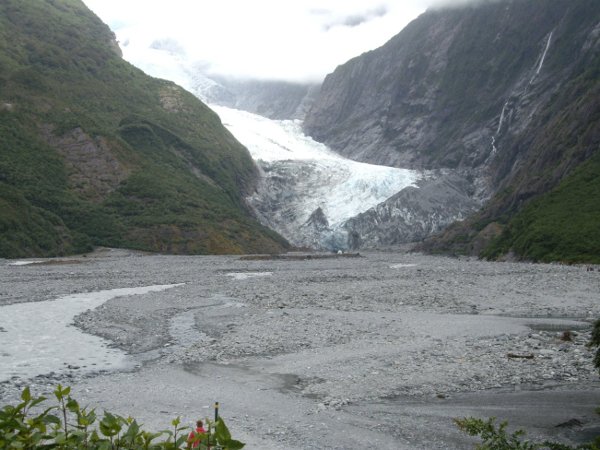Alan Radcliffe: challenging the conclusions drawn from the Arctic Ice record
I had a look at the NSIDC long term arctic ice record; see attached copy. The 30 year graph by NSIDC (Word file) doesn't look flash, but that's because the bottom line is not zero, it is 14 million square km. I plotted this graph with a zero sq km bottom line and it changes the picture dramatically, it does not look anywhere near so bad, the 30 year decline is about 7.8%, which in geological terms is not at all big. The trend could easily reverse (as it has in the Antarctic) and increase the ice cover dramatically. Just a few more months of the Iceland volcano may do it.
However, the 30 year Arctic ice picture is a decrease.
The National Snow and Ice Data Center
Supporting Cryospheric Research Since 1976
449 UCB University of Colorado Boulder, CO 80309-0449
http://nsidc.org/arcticseaicenews/
Downloaded 20 April 2010
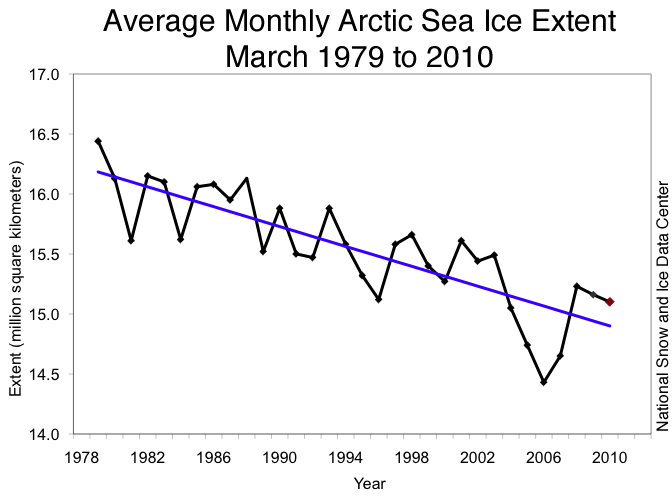

These two paragraphs are copied directly from the government website.
The derived data/conclusions are Alan’s.
"The earliest traces of New Zealand glaciation are the layers of sediment at Ross, in Westland. They may have been laid down more than 2.5 million years ago, in what is known as the Ross Glaciation. Deep-ocean deposits drilled offshore show that the climate has alternated between warm and cold as many as 20 times since then, with nine South Island glaciations in the last 700,000 years. Most is known about the most recent glacial period – the Ōtira Glaciation, between 75,000 and 14,000 years ago. By this time, the rising Southern Alps had developed their present pattern of ranges and valleys, down which ice moved. The landscapes of the Southern Alps were mostly sculpted by ice as it advanced and retreated during this period. The last advance of Ōtiran glaciers reached its greatest extent around 18,000 years ago. The area they covered is evident from moraine ridges – the heaps of rock debris that built up along the glacier’s edge. On the South Island’s West Coast, ridges hundreds of metres high reach the coast, and sonar mapping shows they extend many kilometres from shore under the Tasman Sea.
When first visited by geologist and explorer Julius Haast in 1864, the front edge of the Franz Josef Glacier stood near Sentinel Rock, several kilometres further downvalley than today. Franz Josef began a rapid retreat in the mid-1930s. A lake formed in front of the glacier between 1939 and 1949, but rapidly filled with rock debris. Since then, the Franz Josef and the Fox have been retreating, with occasional brief advances. The Franz Josef was at its smallest extent in 1982, but since then its front has once again advanced about a kilometre." Taken from the Government website www.teara.govt.nz/en/glaciers-and-glaciation/3
Alan's Notes
(1) The phrase "Franz Josef began a rapid retreat in the mid-1930's" appears to be incorrect. There is a sign on the road about 5 km downstream from the terminal face that says "In 1750 the Glacier was here". The average rate of retreat from this position in 1750 to 1930 is similar to the average rate from 1930 to 2009. There is nothing to support calling the period of retreat since 1930 "rapid".
(2) The phrase "Since then the Franz Josef (and Fox) have been retreating with occaisional brief advances" is not correct. From 1949 to 2009 is 60 years, and the advances from 1984 appear to have lasted more or less to the present day, that is 25 years. An advance for much of 25 years is hardly a brief period within 60 years.
(3) It is only 2.5km from Sentinel Rock to the 2009 terminal face, hardly "several kilometres".
These misleading phrases show a more alarmist picture that the facts support.
I took the attached photographs of a scientific display on glacial activity of the Franz Joseph glacier. The display was in the Department of Conservation visitor centre at Franz Joseph in January 2009. The 18,000 years photo shows 4 ice extents, 18,000, 14,000, 9000 years ago and today. So 18000 years ago glaciers covered the whole land from the top of the alps to the coast (28kms), and beyond into the sea for many kilometres.
When looking at rates of retreat or advance, an example of an interglacial retreat would be from the coast to the Franz terminal (15km) in say 3000 years between 18,000 and 15,000 years ago, allowing the 1000 years from 15,000 to 14,000 as a period of advance. This is an average of 5 metres per year. For an example of advance, between 1984 and 1998 Franz advanced over 1000 metres. That is an average rate of 71 metres per year, much faster than the retreat example.
The slide 6147a shows glacier levels from 1865 to 1970. In 1970, 1998 and 2009 the terminal face was in much the same position, and in 1984 the terminal face was further south up the valley. There was retreat from 1970 to about 1984, advance from 1984 to 1998, and small changes since then. Some of the post 1984 advance has melted, but not all. Looking at the cross section of the valley where the dates 1865, 1901, 1930, 1950, 1930, 1901, 1865 are written, the cross sectional area between the 1865 and 1930 levels is much bigger than the cross sectional area from the valley floor up to the 1930 level. In other words, the melt from 1865 to 1930 (pre "large volume of oil and coal burning") was bigger than from 1930 to the present day. That is, in pre "oil burn" times the melt was much greater than after..
The above illustrates that:-
(a) For thousands of years before the burning of coal and oil, rates of retreat and advance were similar or greater than present day rates, and in earlier times glaciers covered greater areas than in the last century.
(b) In the last 18,000 years there have been almost continuous advances and retreats of the glaciers over tens of kilometres, at average rates similar to or greater than those happening in recent times.
(c) Since 1865 there was more melting of glaciers before oil and coal was burnt in large volumes than after.
(d) Therefore there has been no discernable human induced glacier melt since 1930.
(e) There is no point in being alarmist about the glacier changes that are now seen, as they normal glacier activities.
Yours sincerely
Alan Radcliffe
6154a advancing 1998

6153a retreat
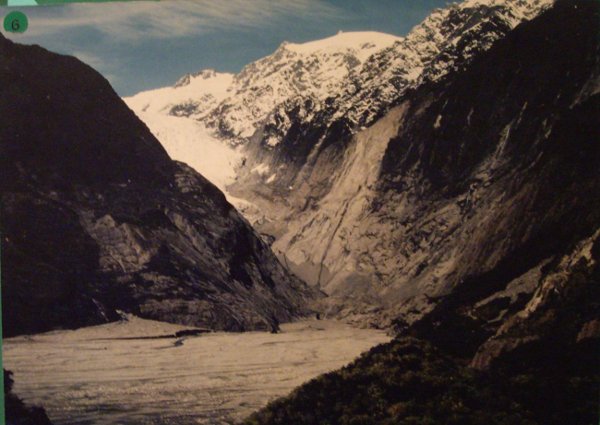
6152a glacier cross section
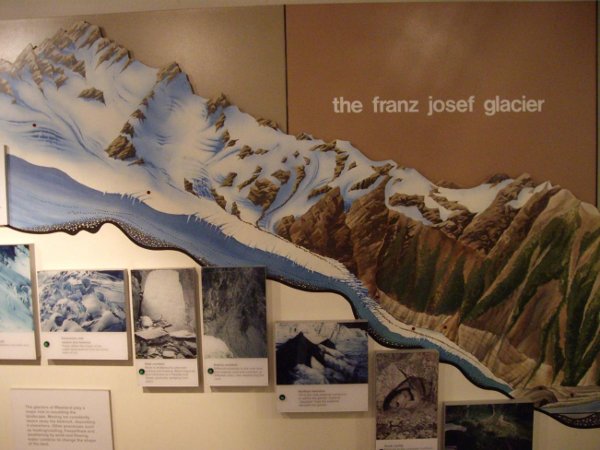
6151a explanation
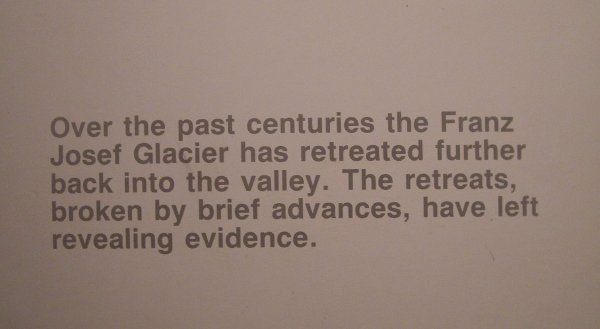
6150a advances

6149a explanation
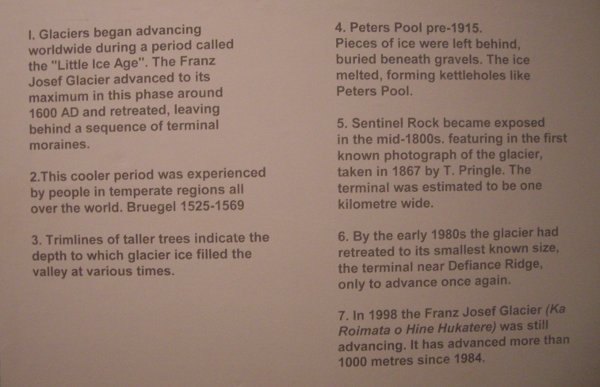
6148a Bruegel and Franz advance

6147a Franz Glacier levels
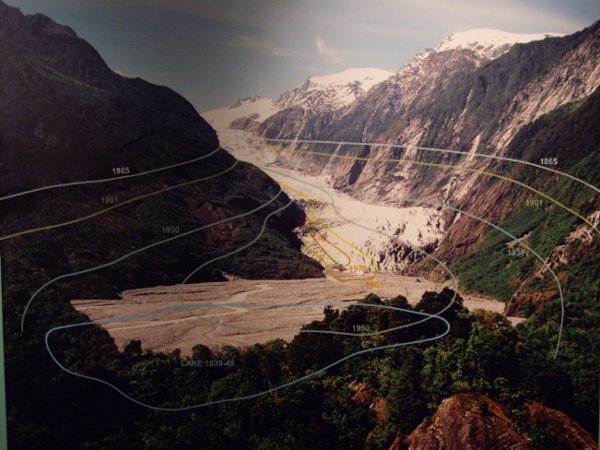
6146a explanation1
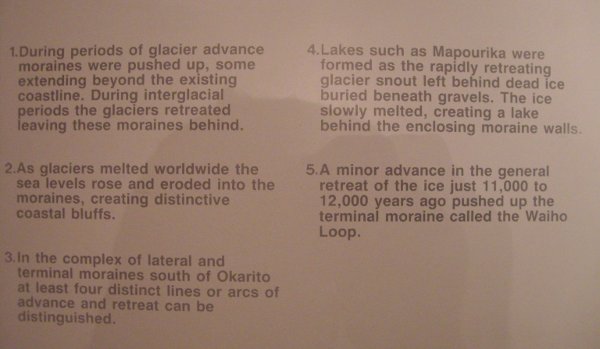
6145a 18,000 years
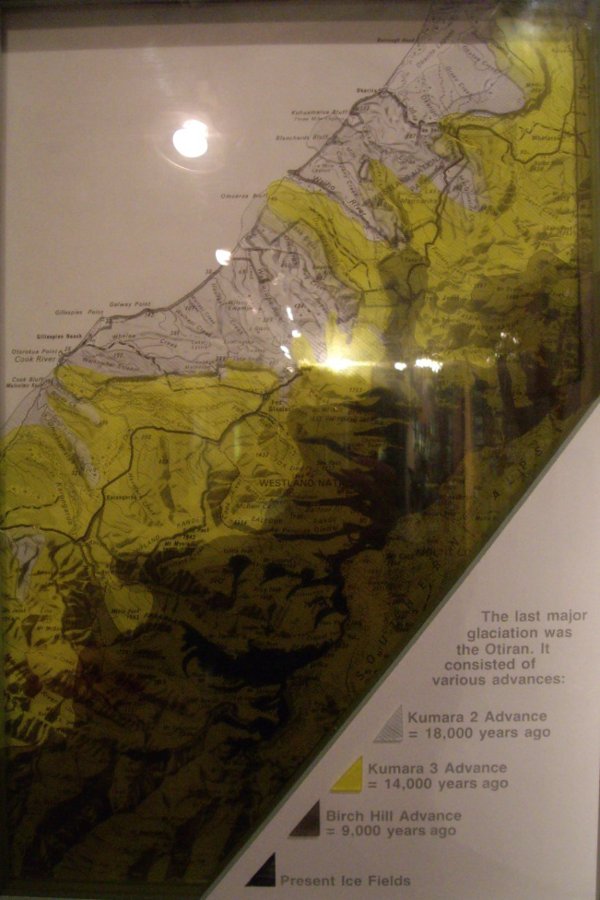
6182a Advancing 2009
